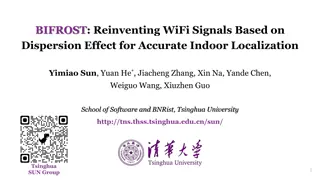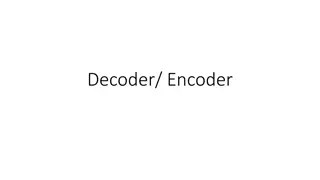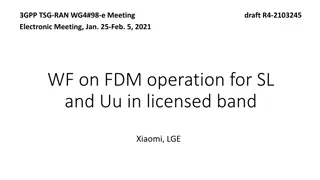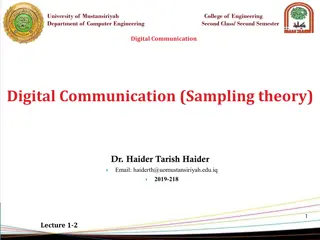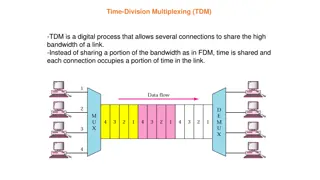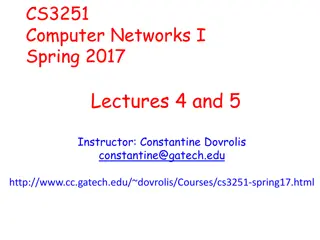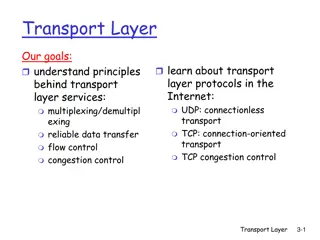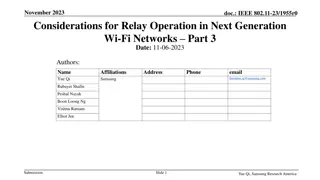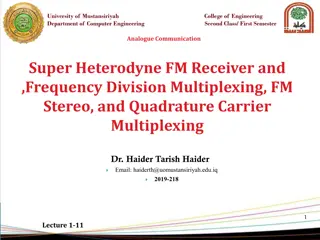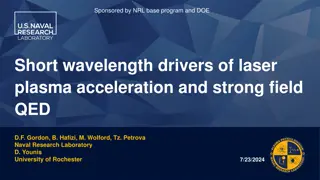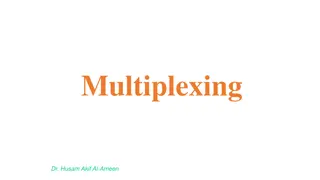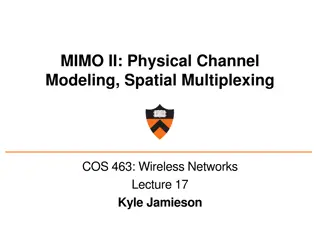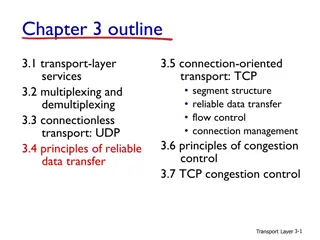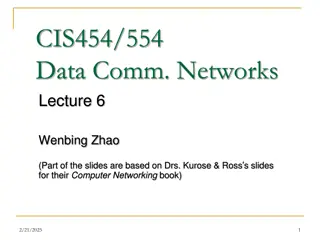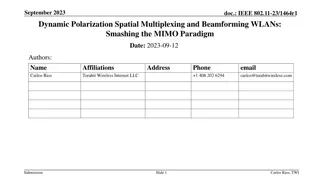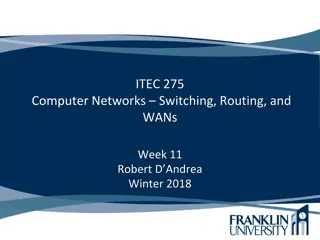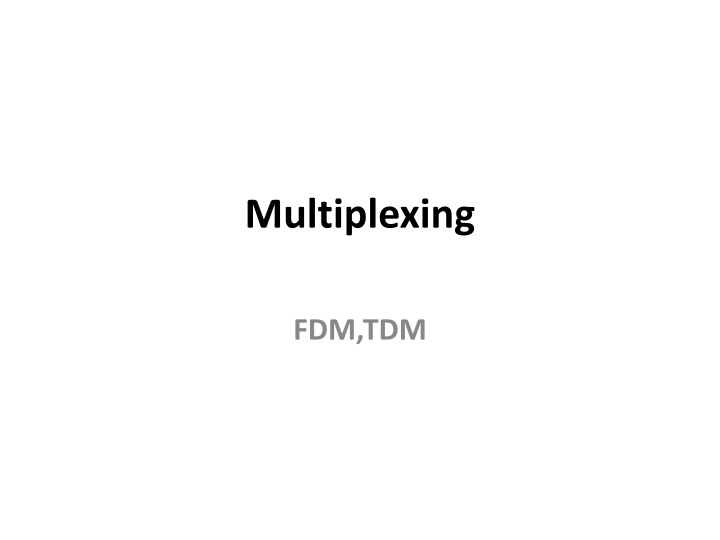
Multiplexing Techniques: FDM and TDM
Explore the world of multiplexing with Frequency Division Multiplexing (FDM) and Time Division Multiplexing (TDM). Learn how signals are combined for efficient data transmission and discover practical applications in radio broadcasting and telecommunications.
Download Presentation

Please find below an Image/Link to download the presentation.
The content on the website is provided AS IS for your information and personal use only. It may not be sold, licensed, or shared on other websites without obtaining consent from the author. If you encounter any issues during the download, it is possible that the publisher has removed the file from their server.
You are allowed to download the files provided on this website for personal or commercial use, subject to the condition that they are used lawfully. All files are the property of their respective owners.
The content on the website is provided AS IS for your information and personal use only. It may not be sold, licensed, or shared on other websites without obtaining consent from the author.
E N D
Presentation Transcript
Multiplexing FDM,TDM
Frequency division multiplexing (FDM) Frequency division multiplexing (FDM) is an analog technique that can be applied when the bandwidth of a link is greater than the combined bandwidth of the signals to be transmitted. In FDM, signals generated by each sending device is modulated with different carrier frequencies. These modulated signals are then combined into a single composite signal that can be transported by the link. Carrier frequencies are separated by sufficient bandwidth to accommodate the modulated signal. Channels can be separated by unused bandwidth guard bands to prevent signals from overlapping. In the demodulator, the original signals are separated from the composite signal through filtering. In addition carrier frequencies must not interfere with the original data frequencies. We consider FDM to be an analog multiplexing technique; however, this does not mean that FDM cannot be used to combine sources sending digital signals. A digital signal can be converted to an analog signal before FDM is used to multiplex them.
Consider an example: Assume that a voice channel occupies a bandwidth of 4 kHz; we need to combine three voice channels into a link with a bandwidth of 12 kHz, from 20 to 32 kHz. Assume there are no guard bands. First we modulate each of three voice channels to a different bandwidth. We use the 20 to 24 kHz bandwidth for the first channel, the 24 to 28 kHz bandwidth for the second channel, and the 28 to 32 kHz bandwidth for the third one. At the receiver, each channel receives the entire signal, using a filter to separate out its own signal. The first channel uses a filter that passes frequencies between 20 and 24 kHz and filters out (discards) any other frequencies. The second channel uses a filter that passes frequencies between 24 and 28 kHz, and the third channel uses a filter that passes frequencies between 28 and 32 kHz. Each channel is then demodulated so that the original signal can be found. Application: A very common application of FDM is AM and FM radio broadcasting. Radio uses the air as the transmission medium. A special band from 530 to 1700 kHz is assigned to AM radio. Each AM station needs 10 kHz. However, FM has a wider band of 88 to 108 MHz because each station needs a bandwidth of 200 kHz. Besides, the first generation of cellular telephones also uses FDM. Each user is assigned two 30 kHz channels, one for sending voice and the other for receiving. The voice signal, which has a bandwidth of 3 kHz (from 300 to 3300 Hz), is modulated by using FM. Remember that an FM signal has a bandwidth 10 times that of the modulating signal, which means each channel has 30 kHz (10 3) of bandwidth. Therefore, each user is given, by the base station, a 60 kHz bandwidth in a range available at the time of the call. Another common use of FDM is in television broadcasting. Each TV channel has its own bandwidth of 6 M Hz.
Practice Problem Five channels, each with 100 kHz bandwidth, are to be Frequency division multiplexed together. What is the minimum bandwidth of the link if there is a need for a guard band of 10 kHz between the channel to prevent interference?
Time Division Multiplexing (TDM) Time Division Multiplexing (TDM) is a digital multiplexing technique for combining several low rate channels into one high rate one. In other word, Time division multiplexing (TDM) is a digital process that allows several connections to share the high bandwidth of a link. Instead of sharing a portion of the bandwidth as in FDM, time is shared. Each connection occupies a portion of time in the link. We also need to remember that TDM is, in principle, a digital multiplexing technique. Digital data from different sources are combined into a one timeshared link. However, this does not mean that the sources cannot produce analog data; analog data can be sampled, changed to digital data, and then multiplexed by using TDM.
Let 3 channel with 1 kbps data rate are to be Time Division Multiplexed (TDM). If 1 bit at a time is multiplexed (i.e. a unit is 1 bit), what is the duration of (a) each input slot, (b) each output slot and (c) each frame?
Practice Problem Four channels are multiplexed using TDM. If each channel sends 100 bytes / second and we multiplex 1 byte per channel, show the frame traveling on the link, size of the frame, the duration of the frame, the frame rate and the bit rate for the link.
Solution: a.Data rate of each Source=250*8=2000 bps b. Duration of Each Character=1/250 Sec e. Number of Bit in each frame=(4*8)+1=33 c. Frame Rate= 250 Frame/Sec d. Frame Duration= 1/250 Sec f. Data Rate of the Link= 250*33=8250 bit/sec

